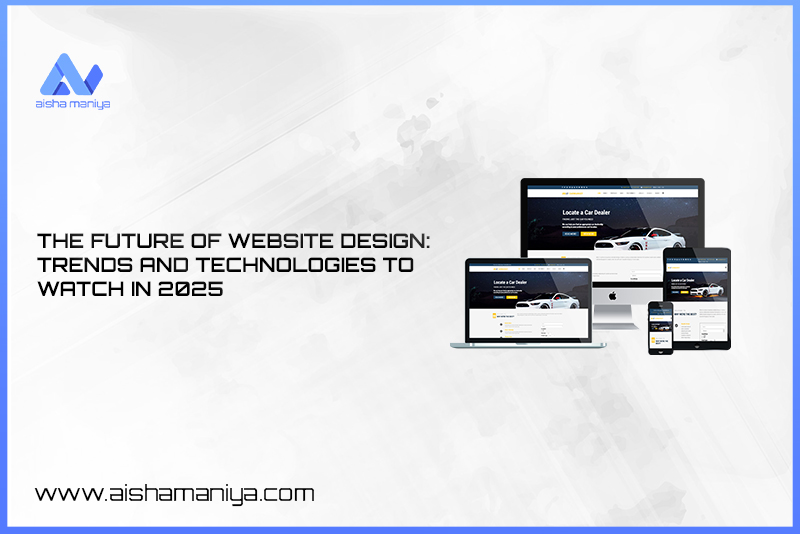latest news & blogs
The Future Of Website Design: Trends And Technologies To Watch In 2025

As we approach 2025, the website design landscape is poised for transformative changes driven by rapid technological advancements and evolving user expectations. This future promises a fusion of aesthetics and functionality, leveraging cutting-edge innovations to create more immersive, accessible, and efficient digital experiences. Here are the key trends and technologies to watch:
AI And Machine Learning:
AI-powered tools will dominate, offering personalized content, chatbots for enhanced customer service, and sophisticated data analytics to optimize user experiences. Machine learning algorithms will enable websites to adapt in real time to user behaviors, providing highly customized interactions.
Voice User Interface (VUI):
With the growing popularity of voice assistants like Alexa and Siri, websites will increasingly integrate VUI, allowing users to navigate and interact using voice commands. This will improve accessibility and provide a hands-free browsing experience.
Augmented Reality (AR) and Virtual Reality (VR):
AR and VR technologies will revolutionize the way users interact with websites. From virtual try-ons in e-commerce to immersive storytelling in media, these technologies will offer engaging and interactive experiences that blur the line between the digital and physical worlds.
Responsive and Adaptive Design:
As the variety of devices and screen sizes continues to expand, responsive and adaptive design will be crucial. Websites will need to offer seamless experiences across smartphones, tablets, desktops, and even wearable devices, ensuring consistency and usability.
Progressive Web Apps (PWAs):
PWAs will bridge the gap between web and mobile apps, offering the best of both worlds. They will provide fast, reliable, and engaging user experiences, even in areas with poor internet connectivity, thanks to their ability to work offline and load instantly.
Dark Mode and Minimalist Design:
User interface preferences are shifting towards dark mode and minimalist designs, which reduce eye strain and battery usage while providing a sleek, modern look. This trend will continue to shape the visual aesthetics of websites.
Cybersecurity Enhancements:
With the increasing number of cyber threats, robust cybersecurity measures will be more critical than ever. Websites will adopt advanced security protocols, such as biometric authentication and blockchain technology, to protect user data and ensure privacy.
Accessibility:
Ensuring that websites are accessible to all users, including those with disabilities, will become a standard practice. Enhanced accessibility features, such as improved screen reader compatibility and keyboard navigation, will be essential for inclusivity.
Sustainable Web Design:
As environmental concerns grow, sustainable web design practices will gain importance. This includes optimizing websites for energy efficiency, reducing carbon footprints, and using eco-friendly hosting services.
3D Graphics and Animations:
Advances in web technology will make it easier to incorporate high-quality 3D graphics and animations, adding depth and dynamism to websites. These elements will create more engaging and visually appealing user experiences.
Conclusion
The future of website design in 2025 will be defined by a synergy of advanced technologies and user-centric approaches. Designers and developers will need to stay ahead of these trends to create innovative, secure, and accessible digital experiences that cater to an increasingly diverse and tech-savvy audience.
